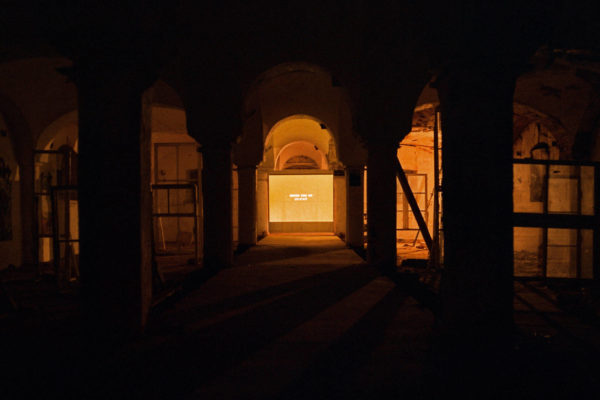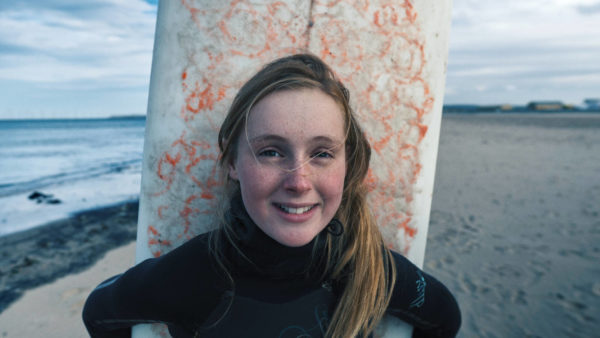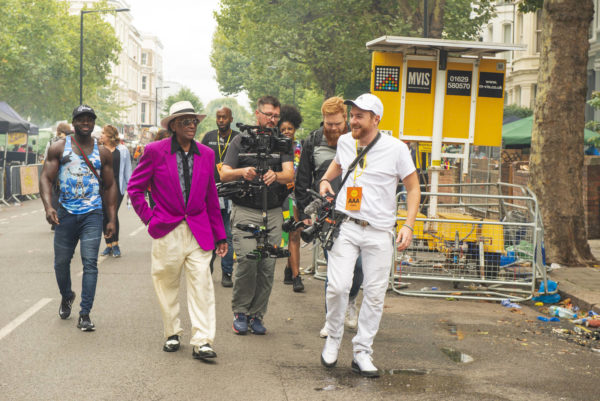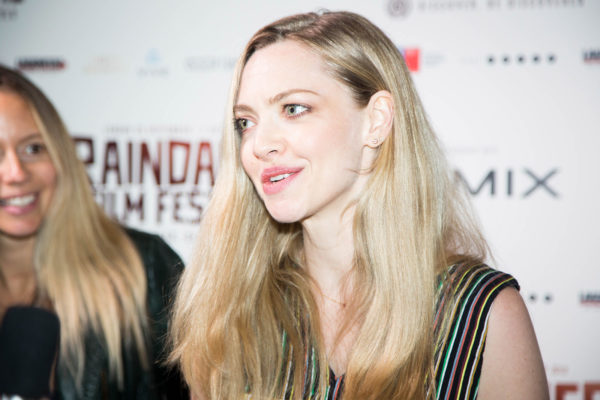Buster Grey-Jung is a multi-disciplinary artist who specialises in documentary film and photography. Josh Grey-Jung is a sound artist and electronic musician based in London.
Here, we speak to the brothers about Heavier Than Air, a collaborative film they made in India this year especially for use in an audio-visual installation.
Josh Grey-Jung: Heavier Than Air is a response to India’s Northwestern desert state, Rajasthan. It was shot on 8mm film and draws inspiration from a culture heavily steeped in spirituality and ritual. The title is a reference to all the kites that dot the skies in the cities and towns throughout the state. Kites are heavier-than-air objects that gain lift from aerodynamic forces – which in turn acted as a visual metaphor for transcendence through faith. Modern distractions aside, the kids were still out flying kites.
Rajasthan is at a crossroads of major change, with polarities between traditional Rajasthani culture and India growing as a major economic power.
I had spent some time in Rajasthan before, and wanted to revisit the area. It’s at a crossroads of major change, and we felt it would be interesting to document the polarities of traditional Rajasthani culture and the inevitable impact that globalisation would have as India grows as an economic power.
Buster Grey-Jung: I consciously decided to only take five cartridges of Super-8 film with me as I wanted to move away from what I’d done before, where I’d shoot excessive amounts of digital footage – I wanted to be more considered. When I got the scans back I arranged them, didn’t cut anything out, and when I watched the film back the first time it was such an interesting but powerful experience. Effectively, I was editing as I was shooting and loved the rawness of how sequences naturally chopped together. I grew to love the limitations of this medium.
Josh: Not having a linear narrative means it can be entered into from any point, which serves an installation setting well. The fact it runs on a loop encourages the audience to get lost in the sound and the visuals. We premiered the film on the grounds of an 18th Century baroque palace in Poland. The building where we set up the installation was actually the palace’s old piggery.

The space was mad; there was no glass in any of the windows, which allowed flocks of swifts and swallows to swoop in and out of the building. When the sun set, the space was filled with these shifting shafts of crazy light. The whole place was super photogenic and atmospheric. You entered down a 50-metre long walkway in the middle of the room, lined by pillars. We set up a screen showing the film right at the end of the walkway. As you moved towards it, the sound got bassier and fuller. It was great to do it there but we both left thinking we’d never find anywhere else as good as that to show the film again!
The immersive element worked, that this was how the film should be engaged with, echoing our own immersion into the communities we spent time in.
Buster: We worked with the set designer Kit Falck to develop a site-specific install of the film, crafting old window frames into sculptural arrays that invited the viewer to move through the space and reframe the imagery. During the screening, the architecture of the piggery became an extension of the visuals, and the acoustics of the space really affected the sound design, too.
Josh: It became clear to us that the immersive element worked, that this was how the film should be engaged with, echoing our own immersion into the communities we spent time in.

Buster: It was in post-production, when Josh did the soundtrack, that we agreed it would be so much more powerful as an installation project. There are longer, more drone-like and trance-y sections of sound and very little dialogue, which lends itself to the idea of having a fluid audience drifting through the space, stumbling into the film at different moments and having to orient themselves. It felt very similar to how we shot the film, and we hope that the piece had the same effect. Watching people’s experiences from afar, they’d arrive at a screen halfway through the film, and stay for a whole other loop. It became more about each individual’s personal journey than there being an ongoing narrative dictating a message. We didn’t want to push a top-down message at anyone. We wanted to create an open platform allowing people to take their own judgement away from it.
Josh: Working as brothers is great. We know each other so well that creating stuff together is a fluid and intuitive experience. We share a similar vision and aesthetic and we both trust each other, which gives us freedom to experiment without having to micromanage everything. Of course we squabble from time to time, but in a brotherly way. In five minutes, you’re back and fully focused.
We were happy with how it was received. Everyone who viewed it was very warm and full of praise. The main thing for us was seeing it in that space; it really came to life. Up till that point we’d only engaged with it through computer screens, so seeing it in that 3D environment it was like, ‘OK cool, this is actually the thing we wanted it to be.’ The whole thing had this heavy gravity to it, a really strong atmospheric feeling. It felt like it was meant to be, in some ways.
Continue Module
Spotlight:
Raindance Emerging Filmmakers’ Day
The Raindance Film Festival hosts a day of screenings and Q&A sessions with emerging filmmakers from around the world.























